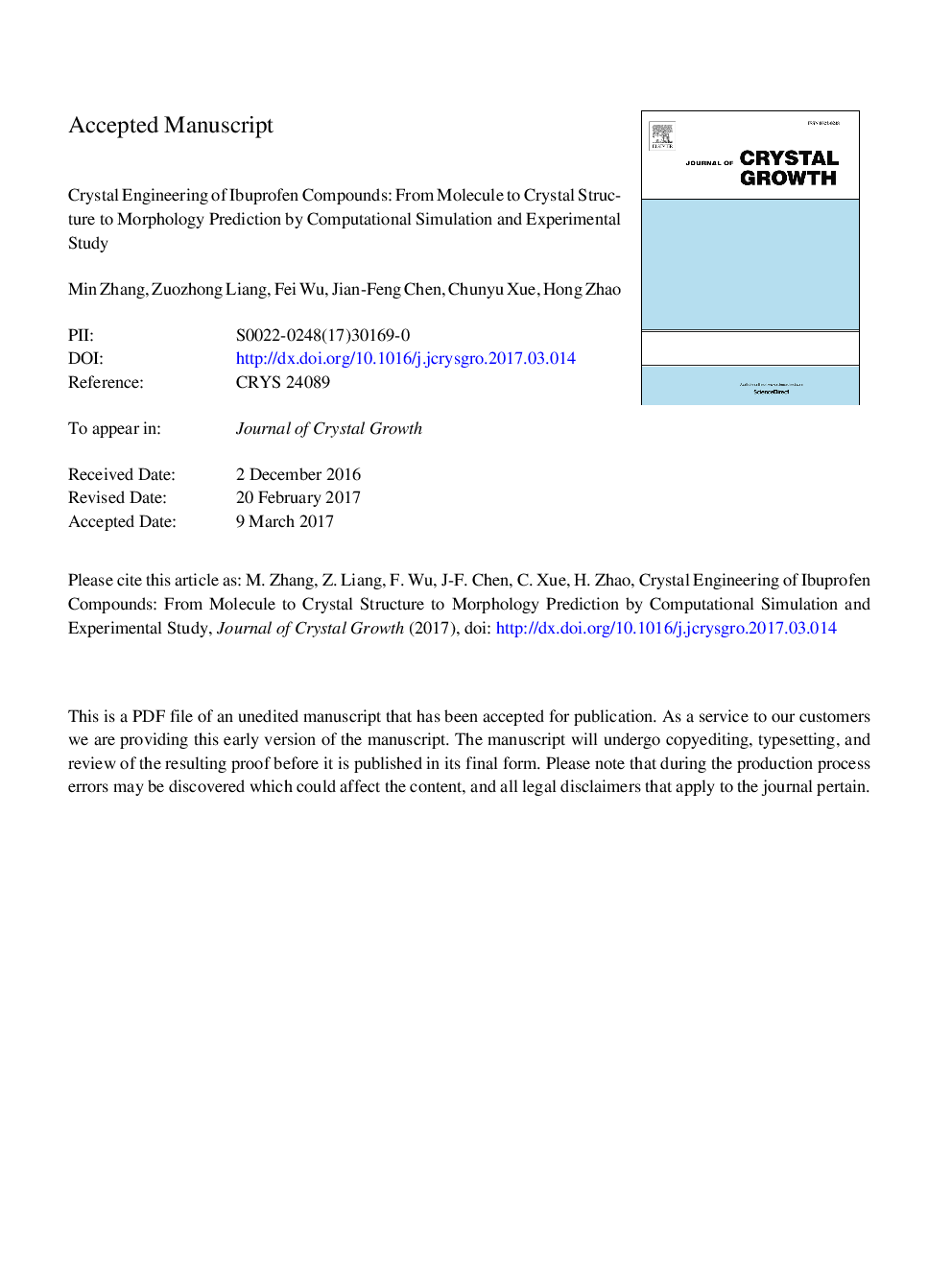| Article ID | Journal | Published Year | Pages | File Type |
|---|---|---|---|---|
| 5489502 | Journal of Crystal Growth | 2017 | 23 Pages |
Abstract
We selected the crystal structures of ibuprofen with seven common space groups (Cc, P21/c, P212121, P21, Pbca, Pna21, and Pbcn), which was generated from ibuprofen molecule by molecular simulation. The predicted crystal structures of ibuprofen with space group P21/c has the lowest total energy and the largest density, which is nearly indistinguishable with experimental result. In addition, the XRD patterns for predicted crystal structure are highly consistent with recrystallization from solvent of ibuprofen. That indicates that the simulation can accurately predict the crystal structure of ibuprofen from the molecule. Furthermore, based on this crystal structure, we predicted the crystal habit in vacuum using the attachment energy (AE) method and considered solvent effects in a systematic way using the modified attachment energy (MAE) model. The simulation can accurately construct a complete process from molecule to crystal structure to morphology prediction. Experimentally, we observed crystal morphologies in four different polarity solvents compounds (ethanol, acetonitrile, ethyl acetate, and toluene). We found that the aspect ratio decreases of crystal habits in this ibuprofen system were found to vary with increasing solvent relative polarity. Besides, the modified crystal morphologies are in good agreement with the observed experimental morphologies. Finally, this work may guide computer-aided design of the desirable crystal morphology.
Related Topics
Physical Sciences and Engineering
Physics and Astronomy
Condensed Matter Physics
Authors
Min Zhang, Zuozhong Liang, Fei Wu, Jian-Feng Chen, Chunyu Xue, Hong Zhao,
